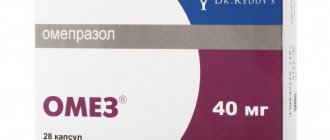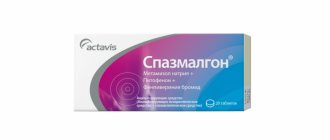- Three-stage pain correction system
- Types of painkillers
- How to relieve pain: a description of the stages of a three-step scheme
- How often does cancer pain occur?
- What is the reason for failure in pain treatment?
- Technologies for managing chronic pain syndromes
- Painkillers for stomach cancer
- Painkillers for lung cancer
Often the first and only symptom of cancer is pain. It causes suffering to the patient, reduces the quality of life, leads to depressive disorders, suicidal intentions and actions.
The fight against pain is a pressing problem in oncology. In order to effectively cope with pain, the doctor must correctly assess its causes, nature, and intensity.
At Euroonko, the area of pain medicine is very well developed. Our doctors use all available methods, including innovative ones.
Three-stage pain correction system
The main method of treating pain in oncology is drug therapy. In the practice of Euroonko, a three-stage pain relief system of non-narcotic and narcotic analgesics is used, which allows you to effectively relieve pain and keep it under control. We take into account the recommendations of the World Institute of Pain (FIPP WIP, USA), the European Federation of the International Association for the Study of Pain (EF IASP).
The method consists of sequential use of analgesics of increasing strength in combination with adjuvant therapy as the pain intensity increases. An important principle is to begin pharmacotherapy immediately when the first signs of pain appear, before a complex chain reaction develops that leads to chronic pain syndrome. The transition to a stronger painkiller is made when all the drugs of the previous step are ineffective in their maximum dosages.
In what cases is Tramadol prohibited?
The use of analgesics in all forms is excluded in case of individual intolerance to the active and auxiliary substances, alcohol abuse or poisoning, or dependence on psychoactive substances. Other contraindications:
- suicidal tendencies, severe clinical depression;
- renal and liver failure;
- undergoing treatment with certain psychotropic drugs;
- epilepsy that cannot be corrected with medications;
- first trimester of pregnancy.
In late pregnancy and lactation, Tramadol is prescribed in exceptional cases for individual indications.
Types of painkillers
Pain relief begins with the prescription of non-steroidal anti-inflammatory drugs (NSAIDs) in tablet form. These include Nurofen, Eferalgan, Nimesil, Diclofenac, etc. If they are ineffective, then at the second stage, combination drugs are prescribed to eliminate moderate pain. They include weak opiates and non-narcotic analgesics. Tramadol is most often prescribed from this group due to its effectiveness and ease of use. The third stage of pain therapy involves the prescription of narcotic analgesics, which help cope with even severe pain. These include buprenorphine, morphine, fentanyl, and omnopon.
Also, corticosteroids - preparations of adrenal hormones - are often used as analgesics. They have a powerful anti-inflammatory effect, especially important for pain caused by nerve compression, headaches caused by intracranial hypertension, and bone pain.
For each patient, medications are selected individually, so there is no universal scheme.
At any stage of pain therapy, analgesics must be taken regularly by the hour. The dose is adjusted taking into account the type and intensity of pain. If the drug becomes ineffective, it is advisable to replace it with an alternative drug of similar strength, but recommend it to the patient as more powerful.
Corticosteroids - preparations of adrenal hormones - are often used as analgesics. They have a powerful anti-inflammatory effect, especially important for pain caused by nerve compression, headaches caused by intracranial hypertension, and bone pain.
Anesthesiologist-resuscitator Vadim Sergeevich Soloviev about opioid analgesics:
Our doctors follow the principles of pain therapy proclaimed by WHO:
- “By mouth” (orally)
means that all injectable forms of analgesics should be excluded and therapy should be carried out using non-invasive dosage forms (tablets, capsules, syrups, transdermal therapeutic systems, rectal forms of drugs, etc.). - “On the clock”
- analgesics should be prescribed regularly according to the schedule, in accordance with the duration of the drug’s effect, without waiting for the development of severe pain, excluding the possibility of “breakthroughs” of pain. - “Ascending”
- the selection of drugs for pain relief is carried out from non-opioid analgesics for mild pain, “mild” opioids for moderate pain and strong opioid analgesics for severe pain, as the pain intensity increases, in accordance with the “WHO pain management ladder” - “Individual approach”
- implies the need for an “individual” selection of an analgesic and is based on the selective selection of the most effective analgesic in the required dose with the least side effects for each individual patient, taking into account the characteristics of his physical condition. - “With attention to detail”
- involves taking into account the characteristics and details of each patient, of course, prescribing co-analgesics and adjuvant agents as the need arises, and monitoring patients.
How to treat irritable bowel syndrome
People with IBS have increased bowel sensitivity. If the causes of IBS are identified, they can be minimized or eliminated altogether. Here are some recommendations on how to treat irritable bowel syndrome.
- Avoid fatty foods and excessive amounts of caffeine, eat regularly at regular times, and chew your food well.
- Don't forget about regular physical activity. Exercise reduces anxiety and restlessness, which has a positive effect on bowel function.
- If there is an urge to defecate, do not delay going to the toilet and, conversely, do not try to speed up this process.
- During bowel movements, relax, take your time, and do not strain.
- You should have a specific eating schedule. When you eat, the large intestine contracts. Usually, half an hour to an hour after eating, the urge to defecate appears. And with IBS, such urges occur more often, with cramps in the intestines or diarrhea.
- Eat small meals. Often the body reacts to the calorie content of food and the amount of fat in it. People with IBS notice that negative symptoms appear if the portion of food is large. Eating small portions, but more often, will help improve your condition.
- Changing your diet is also important. It helps someone if the basis of their diet is low-fat foods with plenty of fiber. Some people note an improvement when eating foods with proteins and carbohydrates. But fat usually stimulates intestinal contractions. Many people with IBS report that they have frequent loose stools after drinking coffee. So the question of choosing a diet for IBS is purely individual.
- Introducing foods rich in fiber into your diet will help relieve constipation. These are, for example, whole grain bread, vegetables and fruits, cereals and legumes. You can also take fiber supplements, but preferably after consulting a doctor.
- Sometimes IBS develops while taking certain medications, especially antibiotics. Therefore, if you notice intestinal irritation for this reason, be sure to tell your doctor.
- A common cause of IBS is stress (emotional, physical, environmental). Relaxation practices help reduce symptoms, and cognitive behavioral therapy is also indicated for IBS.
Irritable bowel syndrome
How to relieve pain: a description of the stages of a three-step scheme
Low pain therapy
The patient is prescribed non-opioid analgesics: NSAIDs (Ibuprofen, Diclofenac, Ketoprofen, etc.), Paracetamol. When choosing a drug, the toxicity to the liver and kidneys inherent in all non-opioid analgesics, as well as the gastric toxicity of non-selective NSAIDs, and the risks from the cardiovascular system when using selective NSAIDs are taken into account. It is advisable to accompany the use of first-line drugs with adjuvant and symptomatic therapy: ion pump blockers, corticosteroids, antispasmodics, benzodiazepines, antihistamines, etc.
Therapy for “moderate” pain
The oral route of drug administration is preferred if the patient can take the drugs by mouth. For patients with mild to moderate pain in whom adequate pain control is not achieved by regular oral paracetamol or non-steroidal anti-inflammatory drugs, the addition of an opioid analgesic may provide effective pain relief without adverse side effects. As an alternative, low-dose opioid analgesics (eg, morphine, TTC fentanyl) may be used.
Therapy for “severe” pain
If the pain is intense and an opioid analgesic in combination with NSAIDs or Paracetamol is ineffective, therapy with strong opioid analgesics should be started. If they were prescribed for moderate pain, you need to increase the dose of the drug until it is effective. Registered prolonged forms of strong opioid analgesics in our country and used in our clinic are: morphine in capsules and tablets, TTC fentanyl.
Book a consultation 24 hours a day
+7+7+78
How to use Tramadol: instructions
The drug is prescribed by a doctor in short courses as a symptomatic remedy. The regimen of use and dosage depend on the physical condition and age of the patients.
- Instructions for oral solution: patients over 14 years old - 20 drops with a spoon of sugar or water, 1 time per day. If necessary, it is allowed to repeat the dose after 1–2 hours. Children under 14 years of age: at the rate of 1 mg. per 1 kg. body weight.
- Tablets and capsules are taken with water, before or after meals. Daily dose: 50 mg. For severe pain, an increase to 400 mg is possible.
- Tramadol injections are given subcutaneously, intravenously or intramuscularly. Before administration, the contents of the ampoules are diluted in saline solution. Daily doses of the drug vary from 50 to 400 mg. Time intervals between injections: 4–6 hours.
- Suppositories are used rectally, introducing 1 piece. from 1 to 4 times a day.
Elderly people suffering from reduced liver or kidney function are recommended to reduce the dose of Tramadol by half.
How often does cancer pain occur?
Pain occurs in 30% of cancer patients who receive treatment and in 60–90% of patients due to disease progression. The main sources of cancer pain:
- cancer itself (45–90%);
- concomitant inflammatory reactions leading to spasm of smooth muscles (11–25%);
- pain in the area of the postoperative wound after surgery (5–16%);
- concomitant pathology, for example, joint damage, arthritis (6–11%), neuralgia (5–15%).
Cancer pain syndromes are grouped:
- According to the origin of the pain flow: visceral, somatic, neuropathic, psychogenic.
- According to qualitative subjective assessment: burning, stabbing, cutting, drilling, pulsating.
- By intensity: assessed using special scales.
- Duration: acute and chronic.
- By localization: abdominal, cardialgia, lumbodynia, muscle-articular and others.
Due to significant differences in the mechanisms of pain, there is no universal analgesic to relieve all types of pain syndromes. Treatment should always be individualized.
Get rid of pain
FloraChamp Gastrostress Relief
FloraChamp Gastrotres Relief is a dietary supplement prescribed for irritable bowel syndrome and other intestinal disorders. The drug relieves discomfort, bloating, cramps, and normalizes stool. "FloraChamp Gastrostress Relief" inhibits the proliferation of pathogenic microflora and stabilizes the protective functions of the intestinal mucosa. The capsules contain probiotic bacteria, chamomile, mint, vitamin B6, zinc. Vitamin B6 and zinc reduce fatigue, strengthen the immune system, chamomile and mint soothe.
FloraChamp
Abbott Laboratories, France; ABBOTT, France
A complex of dietary supplements designed to optimize intestinal function.
FloraChamp Colix Baby - helps soothe babies and children with intestinal discomfort or colic, which may manifest as crying and fussiness. FloraChamp Diaro Baby is intended for recovery from acute diarrhea (including rotavirus infection) and helps to avoid antibiotic-associated diarrhea and hospital diarrhea. FloraChamp Helibalance - the product can be used as dietary support in people who have received a course of anti-Helicobacter pylori therapy. FloraChamp GastroStress Relief is a product that has a positive effect on intestinal function by inhibiting pathogenic microflora and helping to stabilize the intestinal mucosal barrier. from 1100
5.0 2 reviews
44
- Like
- Write a review
What is the reason for failure in pain treatment?
Due to the lack of specialized training in pain management, even among oncologists, and due to the perception of cancer as an incurable disease, even medical specialists often do not realize that cancer pain can be managed.
In 80–90% of patients, pain can be completely eliminated, and in the rest, its intensity can be significantly reduced. To do this, the doctor needs to take into account each of the sources and mechanisms of pain to select adequate pain therapy for cancer.
In clinical practice, we constantly encounter typical errors in the treatment of pain: unreasonably early prescription of narcotic analgesics, use of excessive dosages of drugs, non-compliance with the prescription regimen of analgesics.
What is IBS and how is it treated?
December 23, 2022
7244
5
7
Content
- Causes of Irritable Bowel Syndrome
- Symptoms of Irritable Bowel Syndrome
- How to diagnose IBS?
- How to treat irritable bowel syndrome?
- How to treat irritable bowel syndrome
- What medications are prescribed for irritable bowel syndrome?
- Spasmomen
- Imodium
- Metamucil
- Lotronex
- Melipramine
- Paxil
- Lorazepam
- FloraChamp Gastrostress Relief
Irritable bowel syndrome is a complex of symptoms that develops against the background of a functional digestive disorder. At the same time, there are no organic pathologies in the intestines. This is a very common disease, diagnosed in 10-20% of people in the world. The majority of IBS sufferers are women, and the average age of such patients is 25-40 years. But many of them do not go to doctors.
There are several types of IBS:
- spastic-colitic;
- diarrheal;
- constipated
Technologies for managing chronic pain syndromes
Euroonko is equipped with all the necessary equipment, including individual wearable pumps and devices for dosed administration. The clinic has the licenses and permits required by the legislation of the Russian Federation. We have a well-equipped pain therapy department staffed by physicians who specialize in pain medicine.
Use the quick links to find out about the pain relief method you are interested in:
- Pain relieving patches
- Spinal anesthesia
- Epidural anesthesia
- Catheterization techniques
- Neurolysis through the gastrointestinal tract using endosonography
- Injection of drugs into myofascial trigger points
- Fascial blocks and nerve and plexus blocks
- Radiofrequency ablation
- Neurosurgical interventions
- Patient controlled analgesia (PCA)
Pain relief for stage 4 cancer can significantly improve the patient’s quality of life, reduce, and in most cases prevent suffering. This helps to give the terminally ill patient additional time during which he can actively communicate with family and friends and spend the last days of his life without painful symptoms.
Pain relieving patches
This is a method of transdermal administration of the drug. The patch contains four layers: a protective polyester film, a reservoir with the active substance (for example, fentanyl), a membrane that adjusts the release intensity and an adhesive layer. The patch can be applied anywhere. Fentanyl is released gradually over 3 days. The effect begins within 12 hours; after removal, the concentration of the drug in the blood slowly decreases. The dosage may be different, it is selected individually. The patch is prescribed, as a rule, at the very beginning of the third stage of pain relief for oncology.
Spinal anesthesia
During spinal anesthesia, the medicine is injected into the spinal canal, subarachnoidally. This leads to a temporary “switching off” of tactile and pain sensitivity. The introduction requires a certain amount of experience from the doctor. Local anesthetics and opioid analgesics are used as pain relievers. The effect is long lasting and pronounced. Mainly used for surgical interventions, for acute, unbearable pain, it has a number of side effects on the cardiovascular and respiratory systems.
Sign up for a consultation now
Epidural anesthesia
A more gentle method compared to the previous one. The medicine is injected into the space where the spinal nerves form. The drugs are similar to spinal anesthesia. Epidural anesthesia is used for long-term pain relief when oral and parenteral methods of administration no longer provide results.
Catheterization techniques
Catheterization techniques allow for long-term, high-quality pain relief. The introduction of port systems into the epidural and subarachnoid space with the use of local, narcotic and adjuvant drugs allows for long-term relief from pain and reduces the use of other analgesics that have their own side effects.
Neurolysis through the gastrointestinal tract using endosonography
Neurolysis (neurolysis) is the process of destruction of the nociceptive (pain) nerve pathway.
One of the most effective methods is neurolysis of the celiac (solar) plexus
, which is located in the retroperitoneal space in the upper abdomen and innervates the abdominal organs: stomach, liver, biliary tract, pancreas, spleen, kidneys, adrenal glands, large and small intestines to the splenic flexure.
The analgesic is administered transgastrically - through the gastrointestinal tract; accuracy is ensured by endoscopic ultrasound control. Such methods of local anesthesia are used, for example, for pancreatic cancer with an effectiveness of up to 90%
. The analgesic effect can last for more than several months, while narcotic analgesics would have to be administered continuously using the classical method.
Injection of drugs into myofascial trigger points
Myofascial pain syndrome is expressed in muscle spasm and the appearance of painful lumps in tense muscles. These are called trigger points and are painful when pressed. Injections into the trigger zone relieve pain and improve mobility of the body area. The purpose of trigger point injections is to “break” the pain cycle of pain-spasm-pain. They successfully treat spasms of many muscle groups, especially in the arms, legs, lumbar region and neck, and head. Often used as adjunctive therapy for fibromyalgia and tension headaches.
Fascial blocks and nerve and plexus blocks
The same qualitative effect is provided by fascial blockades and blockades of nerves and plexuses.
A nerve or plexus block involves injecting a drug near the nerve that connects to the affected organ and causes pain. Peripheral blockade procedures are performed by experienced specialists using ultrasound navigation, which allows for more precise administration of the analgesic drug to the required location without affecting or damaging the nerve structures.
The use of hormonal drugs during blockade can eliminate pain for a long time, and repeated blockade can eliminate pain for several months
. Depending on the type of anesthetic, the procedure is carried out once a year, once every six months or every week. Another plus is the minimal number of negative consequences.
Radiofrequency ablation
This technology is based on selective thermocoagulation of certain nerves with special electrodes. The affected area is carefully controlled, allowing very small areas to be treated without damaging nearby motor and sensory nerves. Recovery after the procedure occurs very quickly and with almost no consequences, which allows the patient to return to normal life.
The procedure can be performed without hospitalization. Radiofrequency destruction gives a long-lasting effect that can last up to a year or more
.
The incidence of complications and side effects is very low. If the pain returns, treatment may be repeated.
Write to an oncologist
Patients with obvious mental disorders, with secondary pain or drug addiction are an unsuitable population for neurodestructive manipulations. Such patients may continue to complain of pain even if the procedure is successful. The patient must have a realistic view of the outcome of treatment. He must understand that the goal is to reduce pain, not completely eliminate it.
a diagnostic blockade is required.
. A good effect of a diagnostic blockade can predict a satisfactory result of neurodestruction. However, the same diagnostic block must be repeated at least one more time, even if the pain relief was significant, to negate the placebo effect.
If the result is not entirely clear, differential blocking should be used. In patients with widespread or multilocal pain, the outcome of treatment usually does not meet expectations. The patient should be aware that targeting one area may not achieve the desired effect and may require additional destruction to achieve maximum pain relief.
Euroonco doctors talk about radiofrequency ablation:
The procedure should be avoided on mixed nerves as it may result in loss of skin sensation and muscle weakness. Deafferentation pain can be aggravated by destruction of the damaged nerve. When pain is of central origin (spinal or higher), peripheral nerve destruction may cause an increase in pain perception due to the elimination of incoming stimulus. The best alternative in this case is neuroaugmentation with TENS or spinal cord stimulation.
Neurosurgical interventions
During the procedure, the neurosurgeon cuts the spinal or cranial nerve roots through which the nerve fibers pass. Thus, the brain is deprived of the ability to receive pain signals. Cutting the roots does not lead to loss of motor ability, but may complicate it.
Patient controlled analgesia (PCA)
This type of pain relief is based on a simple rule: the patient receives analgesics when he wants it. The scheme is based on individual perception of pain and the need to take analgesics. In European countries, RSA has been accepted as the standard for postoperative pain management. The method is simple and relatively safe
. However, patients must be thoroughly instructed.
PCA is most effective when using catheter methods (epidural, spinal anesthesia, nerve plexus block with catheter installation), as well as port systems, both venous and epidural and intrathecal.
How to treat irritable bowel syndrome?
If the diagnosis of IBS is confirmed, the gastroenterologist will prescribe you specific treatment. Common medications that your doctor may prescribe include:
- Antispasmodic anticholinergic drugs.
Such remedies relieve spasms in the intestines, reduce pain, and fight bloating and other discomfort associated with IBS. But it is better to take such drugs if negative symptoms are observed after eating. Antispasmodics for the intestines can cause side effects such as tachycardia, blurred vision, constipation, dry nose and mouth, and problems with urination. - Antidiarrheal drugs.
Typically, such remedies for IBS cope well with frequent loose stools and an urgent urge to defecate. - Laxatives.
If the main symptom of irritable bowel syndrome is constipation, gastroenterologists prescribe laxatives. Typically, the active ingredients of such drugs are calcium polycarbophil, methylcellulose or psyllium. - Medicines for intestinal pain and acute diarrhea.
Such drugs are prescribed to those who have severe symptoms of IBS. They should be taken only on the recommendation and under the supervision of a physician. - Tricyclic antidepressants.
For pain and diarrhea associated with IBS, doctors often prescribe antidepressants, although in lower dosages than for depression. Such remedies are designed to reduce pain signals from the brain to the intestines. Antidepressants combat IBS symptoms such as fibromyalgia and sleep problems. - Selective serotonin reuptake inhibitors (SSRIs).
The active ingredients of such drugs may be: paroxetine, sertraline, fluoxetine, duloxetine, venlafaxine, mirtazapine. SSRIs reduce anxiety and reduce symptoms of depression. - Sedatives.
Such drugs are prescribed for increased anxiety, which often accompanies IBS. If anxiety attacks are short-lived, the doctor may prescribe medications with active ingredients such as diazepam, lorazepam, clonazepam. But since such sedatives can be addictive, they should be taken under the supervision of a doctor. - Means for stimulating intestinal secretion.
Typically, such drugs are prescribed to those who have severe constipation, and other tablets for IBS do not help. - Probiotics.
Preparations with live intestinal bacteria are often prescribed for intestinal irritation.
Read also The most effective probiotics for the intestines: top 5 How to choose a probiotic and for what problems it is prescribed.
Painkillers for stomach cancer
About 70% of patients suffering from stomach cancer experience discomfort and pain. As a rule, pain is localized in the abdomen, but as the tumor progresses it can also occur in other places: in the back, ribs, bones. Neuropathic pain may occur as a symptom of paraneoplastic syndrome or a side effect of chemotherapy.
In addition to the three-step system, benzodiazepines, antidepressants, adrenal hormones (prednisolone, dexamethasone), sleeping pills, and antipsychotics are used to combat pain and discomfort in stomach cancer. For bone pain and pathological fractures, bisphosphonates are prescribed.
The doctor can perform two types of nerve blocks:
- Celiac plexus block
helps relieve pain in the upper abdomen. The conduction of pain impulses through the nerves of the stomach, liver, pancreas, gall bladder, intestines, and kidneys is blocked. - Hypogastric plexus block
helps relieve pain in the lower abdomen. During it, the nerves of the lower intestine, bladder, testicles, penis, prostate, uterus, ovaries, and vagina are blocked.
Plexus blocks can be performed using anesthetics and drugs that temporarily damage the nerves. With neurolysis, a drug is administered that destroys the plexus.
Symptoms of Irritable Bowel Syndrome
You can suspect that you have IBS based on the following symptoms:
- Aching pain in the navel area and where the large intestine is located. Typically, such pain occurs after eating and goes away after passing gas and defecation.
- Diarrhea immediately after eating (usually in the morning and evening).
- Bloating.
- Frequent constipation.
- Feeling of rapid filling of the stomach, nausea.
- General weakness and insomnia.
Symptoms of IBS
Painkillers for lung cancer
The cause of chest pain due to lung cancer can be the tumor itself or a surgical procedure. Other possible reasons:
- Metastases in the brain lead to headaches.
- Metastases of the abdominal organs lead to abdominal pain.
- Metastases in the bones lead to bone pain and pathological fractures.
- Paraneoplastic syndrome leads to neuropathic pain in different parts of the body.
- Pain is one of the side effects of chemotherapy.
In addition to pain-relieving injections for lung cancer with NSAIDs and narcotic analgesics, other drugs, nerve blocks, radiation therapy, and palliative surgical interventions help.
Book a consultation 24 hours a day
+7+7+78
Dosage forms and composition of Tramadol
The active component of the drug is Tramadol hydrochloride. This substance is an opioid agonist and acts on specific receptors in the central nervous system, inhibiting sensitivity to pain. Tramadol is considered an analgesic of mixed action. Available in several forms for local and systemic use:
- Tablets: white coated, scored, in dosages of 50, 100 mg. Packed in blisters, packaged in 10–100 pieces. Excipients in the composition: starch, silicon dioxide, magnesium stearate, MCC.
- Gelatin capsules: 50 mg each, yellowish in color, contain white powder inside the shell.
- Suspension for oral administration: clear sweetish liquid with mint and anise aroma, 1 ml - 100 mg of active ingredient, water, propylene glycol, glycerin, sucrose, flavorings, essential oils. Available in glass bottles
- Solution for injection: with a dosage of 50 mg Tramadol hydrochloride per 1 ml. Water-based, in glass ampoules 1–5 ml.
- Rectal suppositories: fat-based, white torpedo-shaped, packaged in cell blisters. Each suppository contains 100 mg of active substance.
Tramadol Retard tablets are also available with a dosage of up to 200 mg, which have a longer lasting effect.
Milk as medicine
A variety of dairy products help maintain the health of the digestive tract: milk and cream, fresh sour cream and kefir, non-acidic cottage cheese and yogurt. If you are tired of dairy products, you can always treat yourself and your family to baked cheesecakes, which do not lose the beneficial properties of the dairy product. Milk can be added to egg dishes to create a tender, tasty omelette. It is also better to cook porridge with milk - they will be both healthy and satisfying.
Do excipients in the local form of NSAIDs matter?
Yes, they improve skin permeability and perhaps enhance the therapeutic effect in a certain way. In separate studies, for example, topical formulations of diclofenac with dimethyl sulfoxide (DMSO) and diclofenac diethylamine 1.16% have been shown to penetrate the skin faster than “regular” diclofenac sodium gels. In addition, DMSO itself may have a slight anti-inflammatory effect. There is no solid evidence of an increase in the analgesic effect due to the listed supplements, but their use at least helps to overcome the individual characteristics of the skin [7, 9–11].
What does the choice depend on?
The doctor determines the form of administration, relying not only on those drugs that are available. He pays attention to the patient’s age, gender, financial capabilities, and even his mood and attitude towards treatment. Children require special attention.
“Choosing the form of a drug is partly a creative process,” says Ekaterina Bokova, a therapist at the 120 to 80 clinic. “There are no ready-made solutions here. But most often we focus on age. If this is a very young baby, then we choose liquid or rectal forms to prevent spitting and choking. This way, the child will receive his dose of the active substance with a greater guarantee. Sometimes you even have to make a choice in favor of an injectable drug. In any case, a child should not be prescribed “adult” pills and divided into parts.”
The wishes of the patient or relatives also matter when choosing the form of the medicine. For older people, it is important to take fewer pills per day, otherwise you can get confused, especially if there are a lot of medications. In such cases, tablet holders or planners help.
“Unfortunately, older people usually insist on prescribing the most affordable drug,” says Ekaterina Bokova, “here, if possible, we will meet them halfway.”
What does “when used correctly” mean? Anointed, and that’s it.
It is advisable to rub in topical forms of NSAIDs for a while rather than just apply them. The analgesic and anti-inflammatory effect of the ointment will be much higher if you do not just “anoint” it, but actively rub the product into the skin over the sore spot for some time. In the course of relevant studies, it was found that even 45 seconds of rubbing diclofenac diethylamine gel five times increased the transdermal delivery of the drug compared to simple application to the skin. And you need to remember that pain-relieving ointments based on NSAIDs act on areas of pain located immediately under the skin. If we talk about joints, then these are the knees, elbows and small joints of the hands. The local form most likely “will not reach the hip joint.” It should be rubbed “around the circumference” of the limb, for example, not only into the dorsum, but also into the palmar surface of the interphalangeal joint [6, 7].







